This installment in my series of insider guides to great locations to visit in the United States brings us to one of the original 13 American Colonies, the Commonwealth of Virginia. Our tour guide today is my Embassy colleague Corey Crane. His article talks about things he loves to see and do in his beautiful home State, where American icons such as George Washington and Thomas Jefferson lived and changed history.
* * *
VIRGINIA IS FOR LOVERS
by Corey Crane
The site of Jamestown, the first permanent English settlement in North America, Virginia offers unmatched historic destinations that speak to the very heart of the American legacy. Colonial Williamsburg and Yorktown join Jamestown as three of Virginia’s most popular destinations, offering visitors a glimpse into revolutionary-era America. Accompanying these historic offerings are breathtaking mountains, pristine sandy beaches, rich cultural experiences, charming small towns, and award-winning wineries. Virginia is one of our States that has it all – and more.
A history buff’s dream, the Commonwealth State (as we call ourselves) is home to more than 120 national historic landmarks including the homes of American founding fathers George Washington (Mount Vernon), Thomas Jefferson (Monticello), and James Madison (Montpelier), as well as colonial-era villages and civil war reenactment sites. Virginia was the birthplaces of eight American Presidents, more than any other State.
The breathtaking panoramas of oak, pine, and dogwood contained within Virginia’s 15.72 million acres (6.36 million hectares) of forestland provide a stunning backdrop to this repository of American heritage. The state’s inland natural majesty is only matched by the beauty of the 112 miles of pristine Atlantic shoreline with hundreds of wide sandy beaches that draw millions of sun worshippers each year.
Virginia’s irregular shape gives it many neighbors on the east coast of America. To the north, the State is bordered by West Virginia, Maryland, and Washington, DC. To the west are Kentucky and Tennessee, to the south is North Carolina, and to the east lies the Atlantic Ocean.
Within these borders is a veritable wonderland of sights and activities spanning a huge range of interests beyond history or seashores, from the classic and renowned to the truly odd … including the glorious Blue Ridge Mountains and Shenandoah National Park, world-class resorts, amusement parks, a tank museum, the world’s most accurate replica of Stonehenge (made out of Styrofoam), and, of course, the gravesite of General Stonewall Jacksons left arm.

One of our hundreds of local festivals, the Chincoteague Pony Swim features 200 wild ponies swimming the Assateague Channel.
Virginia is named after Queen Elizabeth I (the Virgin Queen). It became the 10th State to enter the Union, on June 25, 1788. Our wonderful and tranquil State is now home to more than 8 million residents, spread across more than 42,000 square miles (109,000 sq. km.) which is about the size of New Zealand’s North Island.
Virginia has the 12th largest population in the United States, but our cities remain open and unencumbered. Our largest city, Virginia Beach, has only 435,000 residents. In my view that low density reflects our style of life, which is slower and calmer than most places. We enjoy life greatly and spend a lot of time reflecting on our past. (If you don’t believe me, just consider our State motto – Thus Always to Tyrants, a saying that encapsulates our belief that oppression and overt control will always be thwarted.)
The city of Richmond, with approximately 200,000 residents (about the size of Hamilton, New Zealand), is Virginia’s historic, stately capital. Located near the center of the State, Richmond was founded more than 275 years ago, in 1737, and is known as the River City because it sits along the banks of the James River.
Richmond’s Old City Hall is a breathtaking landmark. Built in the late 1800′s, it occupies a very special place downtown facing Jefferson’s Capitol Grounds. The building was retired from official use in the 1970’s, but remains a major tourism site for the city. In my visits, I found the sky lit atrium to be particularly interesting. The floor of the atrium is a suspended glass block, propelling light all the way to the basement level, lending the main chambers an ethereal, beautifully lit quality.
The city has seen its share of historical moments. Patrick Henry delivered his “Give me liberty, or give me death” speech at the St. John’s Church, and the Virginia Statute for Religious Freedom (penned by Thomas Jefferson) was debated and passed there. During the American Civil War, Richmond served as the capital of the Confederate States of America. Though it was burned and heavily damaged near the end of the fighting, it recovered quickly after the conflict because of its brick-making and ironworks industries.
To the east, along the Atlantic Coast, is Virginia Beach, a holiday city with miles of beaches and many dozens of hotels, cafes, restaurants, and other entertainment venues along its beachfront. Every year Virginia Beach hosts the East Coast Surfing Championship as well as the North American Sand Soccer Championship, which bring large numbers of spectators to town. It is also home to several state parks, protected beach areas, three military bases, and several notable universities, including Regent University.
An hour’s drive north from Virginia Beach will bring you to Busch Gardens Williamsburg (not to be confused with the colonial village). Opened in 1975 (adjacent to Anheuser-Busch’s brewery), the park has a pre-industrial European theme. With an estimated attendance of more than 2.5 million visitors per year, it’s one of the top 20 entertainment parks in the world and particularly well known for its roller coasters. Among my favorite regions of the huge park are the Banbury Cross of England, Killarney of Ireland, San Marco of Italy, Oktoberfest of Bavaria, and Aquitaine of France.
The real magic of Virginia isn’t in the cities and amusement parks, though, but in the wild, lush land beyond. As the State’s catchphrase says, “Virginia is for Lovers.” With rich, bountiful, beautiful landscapes covered in vivid watercolor strokes, rolling hills, and crystal blue lakes, it’s next-to-impossible not to fall in love while in the State. And visiting is convenient – it’s easily possible to visit summit and beach in the same day.
I have fond memories of visiting Skyline Drive as a child, located in the Shenandoah Mountains that border Virginia, West Virginia, and Maryland. Doing the drive is essential, particularly if you find yourself visiting during the months of October and November. The views are breathtaking, and the many quaint, locally owned cafés along the route enhance the trip with food and espresso. The Shenandoah Mountains are located only 70 miles (112 km) west of Washington DC, thus providing a great weekend getaway for the hardworking residents of the Nation’s capital.
Not far from the Shenandoah Mountains are the Luray Caverns. As a child in grade school, I took a field trip here that I’ll never forget. Discovered in 1878 by five local men, the Caverns are home to wondrous sights including the largest musical instrument in the world – the Stalacpipe Organ, which is a system of stalactites covering 1.5 hectares that produce melodic tones when struck by rubber mallets. Creating the natural “organ” required more than 5 miles of wiring and 36 years of work. The songs played on the organ change seasonally, and the deep tones resonate all through the extensive caverns, captivating visitors.
Circling back to one of my earlier points, many of the most interesting attractions in Virginia focus on the state’s storied history. Among the many highlights, you can visit 406-year-old Jamestown, the first English settlement in the New World. The American Revolution ended on Virginia soil when General George Washington decisively defeated the armies of Lord Cornwallis at Yorktown, forcing the British surrender.
In addition, with more than 300 acres of original and reconstructed buildings, Colonial Williamsburg will transport you back in time to 18th century Virginia, where you can get a firsthand glimpse at revolutionary war-era life in America. Williamsburg is the Nation’s largest and most popular living-history museum.
Other historical sites reflect Virginia’s special status as the ”Mother of Presidents,” which is one of our nicknames. For example, Montpelier, the home of our 4th President, James Madison, is located near the town of Orange. Since 1934, Montpelier has hosted the annual Montpelier Hunt Races in which thousands of horse lovers visit on the first Saturday in November for a day of wholesome family fun. As a teenager growing up nearby, I appreciated the historical site but thoroughly enjoyed the horse racing, the family reunions we scheduled there, and the great barbeque (with a smell nearly as prevalent as that of the horses).
When only in his mid-twenties, Thomas Jefferson, our third President, began building his home, Monticello, just outside Charlottesville, which is now represented on the back of the U.S. nickel coin. Because of its historical and political significance, Monticello is a United Nations World Heritage Site (the only American residence to make the list). In the home Jefferson collected a veritable treasure trove of Native American, pre-colonial American, and scientific artifacts, and his library of more than 6,700 books launched the famed U.S. Library of Congress.
Eclipsing both Montpelier and Monticello in popularity is Mount Vernon, the famous historic plantation of the first President of the United States, George Washington. Conveniently located just outside of the Nation’s Capital overlooking the Potomac River, it’s a great place for tourists to spend an afternoon visiting the mansion and gardens. The structure is an excellent example of colonial architecture, and the furnishings, art, and decorations are almost all original, including the key to Paris’ Bastille, a gift to the President from General Lafayette.
In addition to Washington’s mansion, there are several other buildings of interest for tourists to visit on the estate. You can see a 4-acre (1.6 hectare) demonstration farm where original colonial agricultural practices are maintained and utilized. A working blacksmith will sell you any farm implements you might need. Several theatres and museums display George Washington’s life and times, and a 3-mile trek takes you to Washington’s Distillery and Gristmill, fully functional operations where you can buy a pint to finish off the day.
During the American Civil War, Virginia was considered the stronghold of the rebel South. The Confederacy’s capital was established in Richmond, and Robert E. Lee, a Virginian, was appointed to be the commander of Confederate military forces. In the final stages of the war, retreating Confederate troops set fire to Richmond, burning much of the city in an attempt to prevent it from falling into Union hands.
More than 2,200 of the approximately 4,000 battles fought during the conflict took place on Virginian soil. The first and last significant battles of the war were held in Virginia — the First Battle of Bull Run (near the city of Manassas) and the Battle of Appomattox Courthouse, respectively. You can visit many of the battlefields, which are carefully preserved and often stage full-scale reenactments during the spring and summer months.
I also highly recommend Alexandria, a beautiful city that sits just across the Potomac River from Washington, DC. Alexandria was an important port bustling with colonial and then Union trade. It maintains a colonial feel with many homes featuring their original facades, and it still contains one of the oldest continuously operating markets in the United States, Market Square in Old Town.
Today, Alexandria is also home to the Alexandria African American Heritage Park. Founded in 1995, the park was created to acknowledge and showcase the contributions of African Americans to the city. It contains 7.6 acres (3 hectares) of walking paths, commemorative sculptures highlighting individual African American achievements, and an historic cemetery. The park is also a natural habitat for a variety of animals such as painted turtles and beavers.

Many of the houses in Alexandria maintain their historic facades, providing a rich tapestry of colors.
Located nearby, Arlington National Cemetery is well worth an extended visit. Both solemn and beautiful, it covers 642 acres (250 hectares) of landscaped grounds and contains more than 300,000 grave sites and monuments, including those of President John F. Kennedy, his wife Jacqueline, his brothers Robert and Ted, President William Taft, famed hero Audie Murphy, and many other notable Americans. On the hill in the middle of the grounds is Arlington House, the former home of Robert E. Lee, which offers one of the best views of the National Mall. You can easily walk from Washington to the Cemetery across the bridge behind the Lincoln Memorial.
The most moving part of Arlington to me is the Tomb of the Unknowns (or Tomb of the Unknown Soldier) that contains the remains of unidentified Americans soldiers who have fallen in the line of duty. The Tomb is dedicated to the common memories of all soldiers killed in any war. Soldiers from the U.S. Army’s 3rd Infantry Regiment (nicknamed the Old Guard) guard their fallen comrades here every minute of every day regardless of weather, natural disaster or political strife. Tourists can visit the tomb and observe the changing of the guard. When he visited Washington in 2010, Prime Minister John Key laid a wreath at the Tomb.
Just a short Metro ride away from Arlington is another Virginia landmark – the Pentagon, headquarters of the U.S. Department of Defence. The world’s largest office building by square footage (more than 6,500,000 square feet, or 604,000 square meters), it’s a veritable city unto itself containing almost 30,000 military and civilian employees and about 3,000 non-defense support personnel, as well as a bevy of shops and restaurants.
Public tours of the Pentagon are available, accommodating more than 100,000 visitors each year. On the grounds is a memorial to those innocents who died on the site when terrorists crashed a civilian airliner into the building on September 11, 2001. Simple but emotionally powerful, the memorial is a must-see.
Of course, even the avid history lover often needs to stop for refreshment, and Virginia boasts some of the finest food in the country. The eastern coastline is home to a variety of succulent seafoods including the world-famous Virginia oyster, fresh flounder, and eastern shore crab. But the State is perhaps most famous for its Smithfield Hams, which by law must be cured within Smithfield’s town limits.
If you get thirsty, Virginia is home to more than 200 wineries and is the 5th largest wine-producing State in America. The wines produced in Virginia regularly win prestigious awards around the world. Particularly well-known are those produced with Viognier, the officially designated State grape. When you visit, you can easily drive, bike, or kayak among groups of world-class wineries, enjoying the vintages and live music amidst beautiful scenery.

Hillsborough Vineyard, a family owned vineyard and winery specializing in small batch production of complex wines.
Finally, I should note that Virginia makes a great launching place to visit other U.S. destinations. Washington, DC is right next door, as are the beautiful Chesapeake Bay recreational areas, Maryland’s famous cities of Annapolis and Baltimore, North Carolina’s outer banks recreation areas, and West Virginia’s stunning Blue Ridge Mountains.
A short train ride north takes you to the historic city of Philadelphia with its museums, memorials, and vibrant cultural scene, as well as revered Pennsylvania historical sites such as Gettysburg, Valley Forge, and Washington’s Crossing. And you can easily take an Amtrak train from Virginia farther up the coast to New Jersey, New York City, Connecticut, Rhode Island, Boston, and many other great destinations.
I consider myself truly lucky to have grown up in the great State of Virginia. Its playground of forests, beaches, and caverns gave me a childhood that I will never forget, and the plethora of historic towns, reenactments, and monuments give my family something interesting and uplifting to see and do every time we go home. Take it from me, Virginia is the perfect location to relax, slow down, ponder the past, and enjoy a vacation filled with good weather, great people, and remarkable beauty.
* * *
I enjoyed Corey’s piece because I’ve experienced many of the Virginia pleasures that he described. When I was a small child, my family visited Jamestown, Williamsburg, Arlington, and other historical sites, and I’ve been back many times as an adult. As Ambassador, I visit the Pentagon and other government facilities regularly, and most times that I come to Washington I walk across the bridge for a couple of contemplative hours at Arlington paying my respects.
Thus, I echo Corey’s recommendations and urge you to explore the beautiful, historic Commonwealth of Virginia for yourself. For more information about Virginia, things to see and do, and how to plan your trip, take a look at the State’s travel and tourism website.
As always, let me know if there is an American State, city, or activity that you are curious about. I selected Virginia this week because of suggestions by readers, and I’d be happy to find other colleagues to write on travel topics of interest to you in the future.
![]()
 RSS
RSS



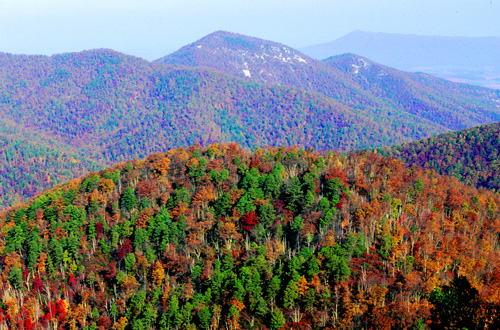









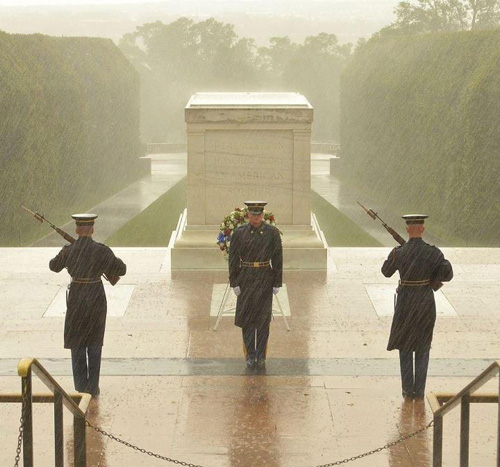













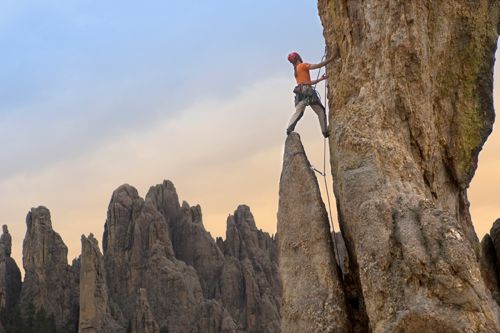
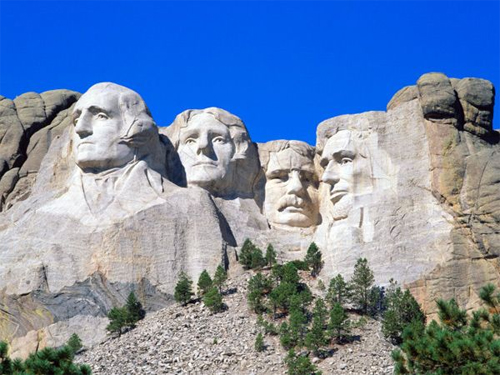
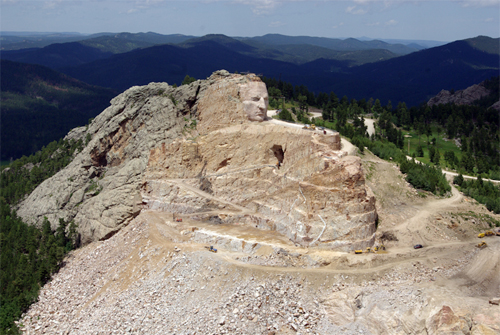




 View my Profile
View my Profile Connect with Wellington
Connect with Wellington Watch our Videos & Subscribe
Watch our Videos & Subscribe Watch our Videos on Vimeo
Watch our Videos on Vimeo Connect on GPlus
Connect on GPlus US Embassy NZ
US Embassy NZ


 Post Entries (RSS)
Post Entries (RSS)

